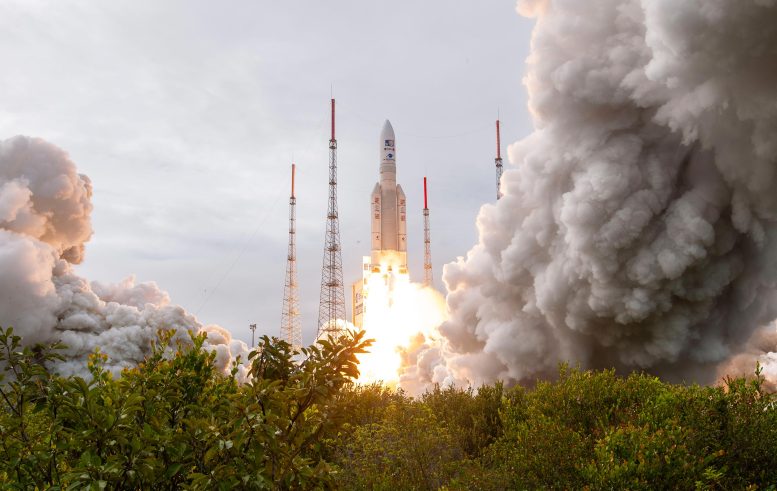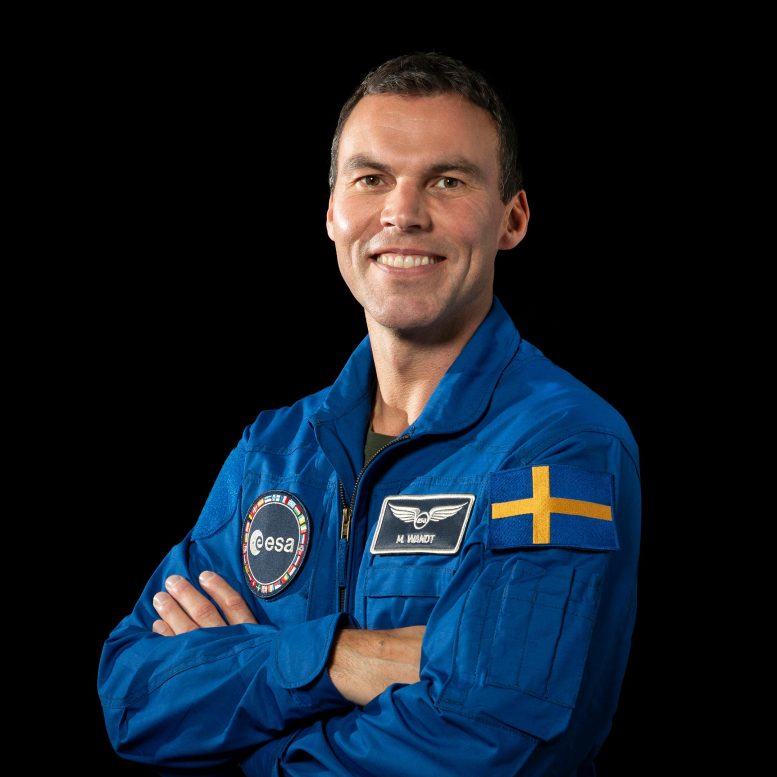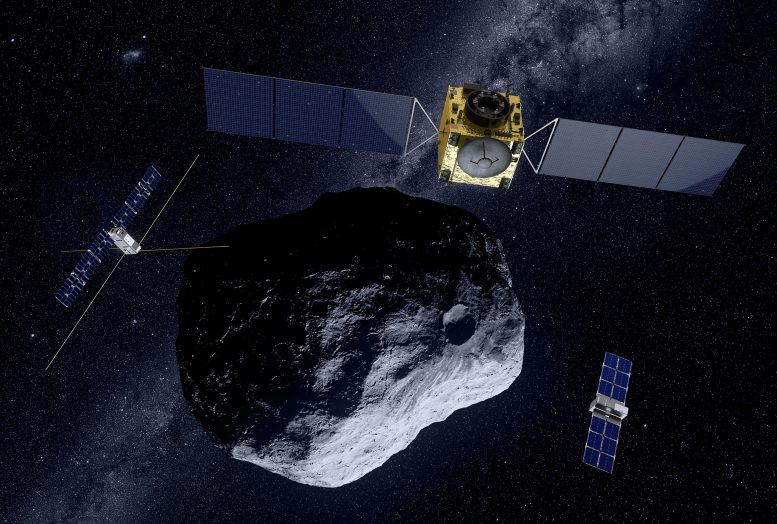

ESA’s interplanetary mission, Juice, lifted off on an Ariane 5 rocket from Europe’s Spaceport in French Guiana on April 14, 2023, to begin its eight-year journey to Jupiter, where it will study in detail the gas giant planet’s three large ocean-bearing moons: Ganymede, Callisto, and Europa. Credit: Arianespace
ESA’s 2024 agenda includes launching the Ariane 6 rocket, collaborating with NASA on Artemis, unveiling data from the Euclid telescope, and deploying several Earth observation satellites. The Galileo system will be expanded, and new astronauts will be mission-ready.
As 2024 kicks into gear, the European Space Agency (ESA) invites you to look ahead and see what awaits us in the coming 12 months.
After Ariane 5’s retirement in 2023, Europe’s new and versatile heavy-duty launcher Ariane 6 will continue the Ariane legacy of excellence and reliability. After years of development and construction, Ariane 6 will be ready for its first flight from Europe’s Spaceport in Kourou.
The European Space Agency (ESA) has a busy year ahead in 2024. Highlights include the first flight of Ariane 6, the return of Vega-C, collaborations with NASA on the Artemis program, and the launch of Proba-3 for solar studies. ESA will reveal data from the Euclid telescope, launch the Hera mission, and deploy several Earth observation satellites. The Galileo navigation system will expand, and the latest astronaut class will complete training, with Marcus Wandt scheduled for a space mission in January. Credit: ESA
In 2024, we’ll see a return-to-flight for Vega-C. Vega-C will continue to provide Europe with its own affordable lightweight launcher. Together both projects guarantee Europe’s independent access to space.
We also continue to collaborate internationally with NASA on the Artemis lunar program. This Spring, another European Service Module, ESM-3, for the third Artemis mission will be shipped to the United States for mating with its Orion capsule.


The two satellites of Proba-3 will fly in formation to form an external coronagraph in space, one satellite eclipsing the Sun to allow the second to study the otherwise invisible solar corona. Credit: ESA – P. Carril, 2013
In 2024, Proba-3 will be launched, the first precision formation-flying mission. The Coronagraph and Occulter spacecraft will fly together forming a 144 m coronagraph studying the Sun’s corona closer to the solar rim than ever before.
At the beginning of the year, the first scientific data gathered by our latest space telescope, Euclid, will be revealed. Euclid was designed to explore the composition and evolution of dark matter and dark energy.
Another exciting mission that will launch later in 2024 is the Hera mission. This mission will fly to the binary asteroid system of Dimorphos and Didymos to observe the aftermath of the impact made by NASA’s Dart mission.
In Earth observation, there are several satellites ready to be launched: the ESA/JAXA mission EarthCARE mission, the Arctic Weather Satellite mission, and the European Union’s Copernicus Sentinel-1C and Sentinel-2C satellites.
2024 will bring new developments as well for Galileo: two more first-generation satellites are to be launched in April, followed by two more later in the year. These will expand the constellation and help guarantee Galileo’s optimal performance. Meanwhile, the first hardware deliveries will take place for the second-generation Galileo satellites.


ESA project astronaut Marcus Wandt from Sweden will travel to the International Space Station on Axiom Mission 3 (Ax-3) no earlier than January 2024. Credit: ESA–P. Sebirot
The five career astronauts from the 2022 astronaut class will finish their basic training this year and then be ready for mission assignments.
For Swedish project astronaut Marcus Wandt, there is no such wait. In January, he will be launched to the Space Station as a mission specialist on the Axiom-3 commercial mission — just time to catch up in space with his Danish colleague, ESA astronaut Andreas Mogensen, who is scheduled to return to Earth after a six-month stay on the Space Station in February.

